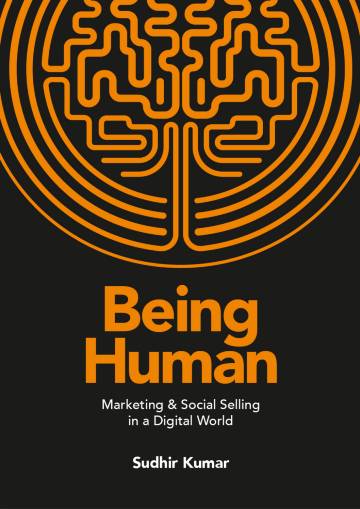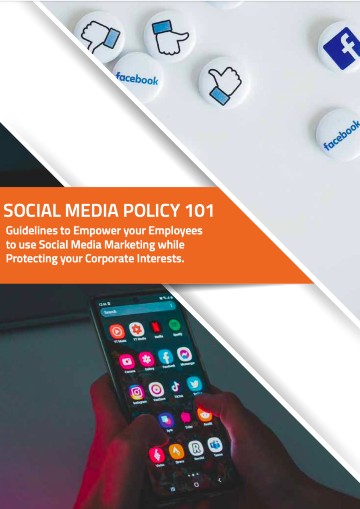
Overview
Internal Engagement is perhaps the hidden Secret Ingredient to building a thriving work culture.
A brand is made by the people it employs. When the employees of a business are proactively engaged with a brand, their professional conduct automatically falls in step with its vision and mission. An internally engaged employee thinks and acts in a way that reflects positively on the brand.
In other words, internal engagement boosts productivity among the workforce by reinforcing common ideals among its employees through promoting good communication and relationship between the workers and the brand. In a report by Gallup, researchers found that a highly engaged workforce can boost a firm’s profitability by as much as 21%.
Profitability isn’t the only metric that is positively impacted by encouraging internal engagement at a firm; there are other more subtle, subjective parameters that experience a boost. Productivity, reduction in attrition, better customer service and response, positive customer feedback, and improved loyalty are some of the soft returns a brand enjoys by improving its internal engagement initiatives. Additionally, a highly engaged employee connects with the brand’s values at a level far higher than a disengaged employee, which directly impacts performance.
Index:
- Defining Internal Engagement
- Misconceptions About Internal Engagement
- Drivers of Internal Engagement
- Why Is Internal Engagement Important?
- Benefits Of Internal Engagement
- Examples of Employee Engagement Initiatives In Action
- How to Boost Internal Engagement?
- Conclusion
Defining Internal Engagement
Internal engagement is a term that defines the strength of the professional, emotional and mental bond that an employee of a firm forms with the brand, with their teams, and work at the company and with the entire organization/enterprise.
In simpler words, internal engagement reflects an employee’s level of eagerness or enthusiasm in carrying out their duties at the company, their degree of commitment, and their dedication to their work.
These qualities rarely come by as a given in an employee and must be systematically cultivated through active campaigning. All in all, an employee can be classified according to their degree of engagement into four heads:
- Highly Engaged
- Moderately Engaged
- Barely Engaged
- Disengaged
1. Highly Engaged Employees
A highly engaged employee loves their job. They work closely with their teams and are looked upon favorably by their colleagues and co-workers. Such an employee is dedicated to their work and advocates the brand in a positive light. They are proactive in their work and think on behalf of the clients and customers. This employee is highly productive and profitable for a business.
Reaching this level of internal engagement is the ultimate goal of any business.
2. Moderately Engaged Employees
These employees experience hesitation or doubts in performing their best for the organization. While they find their jobs favorable, some factors exist in the work environments that hold them back from giving it their all. This employee seeks a better opportunity and is less likely to take on more work or duties than already assigned.
While moderately engaged employees are not a cause for alarm, pushing them in the right direction with slight encouragement may boost their engagement level.
3. Barely Engaged Employees
These employees are the ones that switch jobs frequently. They are not very interested in the company’s affairs and only take care of their immediate responsibilities at work. They experience extremely low motivation towards work and may take frequent leaves. Any company must engage such employees internally, as the expenses for turnover or attrition are unnecessary and high.
4. Disengaged Employees
Disengaged employees are openly negative about their work and organization. They don’t relate to the company’s goals, targets, vision, or mission in the long and short terms. Such employees may bring down the team’s productivity, which is why it is important to handle them sensitively by understanding their concerns and dissatisfaction with the brand.
In another report by Gallup, only about 36% of the employees are engaged in a workplace. By these numbers, identifying the level of engagement of your employees and classifying them accordingly, a good internal engagement strategy could be crafted that leads your organization into better productivity and profitability.
Misconceptions About Internal Engagement
While it is true that high levels of engagement turn an employee into an asset, it is a misconception that this employee is identified by how satisfied they are at the company. Many such myths exist; a few factors differentiate internal engagement from “job satisfaction” (there is a very thin line).
1. Happiness
An engaged employee is most definitely happy, but a happy employee may not be engaged. The line is drawn by the fact that happiness cannot measure the level of engagement; happiness cannot be measured in quantifiable terms in most cases since it is an entirely subjective emotion with individually variable criteria. However, the degree of involvement can be measured in metrics of productivity and timeliness, among others. Incentivizing internal engagement, thus, is a very tricky technique to boost employee involvement.
2. Job Satisfaction
This metric suffers from the same problem as the last one: job satisfaction does not push an employee into being proactive for the brand and advocating it. Job satisfaction is merely a subjective experience that may change over time with the needs and situation of the employee. This isn’t the case with internal engagement; the bond an employee forms with a company or a brand does not weaken easily.
3. Wellness
With work comes stress, and many companies take the initiative to help their employees combat this stress with some activities. However, this cannot be counted as engagement. For one, internal engagement is what employees do for the brand’s wellness and progress, not what the brand does for their wellness or progress.
All the factors discussed above can easily be confused for internal engagement. At the core, it is important to remember that internal engagement can always be quantified (in terms of profitability or turnover), while wellness, happiness, and satisfaction cannot.
Drivers of Internal Engagement
Every company has a work culture, set policies and workflows that it follows. Finetuning a few things across your organizational hierarchy can drastically change how employees view the brand and help boost the levels of internal engagement. Here are the five prime drivers of internal engagement:
1. Good Work Environment
No employee sticks around if the work environment is negative and discouraging. A positive work environment and professionalism in other employees help encourage an employee to put in better efforts for the company. If the work environment reinforces a positive attitude towards responsibilities, it helps boost engagement and promotes teamwork.
2. Setting Crystal Clear Expectations
Each employee of an organization is a cog in the gears of the organizational machinery. It bodes well to set clear expectations for each one of the employees and communicate with them in words that can be clearly understood. When employees know what is expected of them, they enjoy a headstart in their role at the company and, therefore, perform better. A 2019 Mercer study established that 65% of the employees work better when they know what is required.
3. Appreciation Goes a Long Way with Internal Engagement
Making your employees see that their work is making a difference at the company encourages them to work harder. See it like this: if all your efforts and hard work went into a black hole, would you continue?
Appreciate the little accomplishments of your employees, show them how their hard work has contributed to the company’s benefits and watch their engagement levels rise.
4. Flexibility in Work
A work environment that helps employees work even during tough times in their lives truly drives engagement like nothing else. If a team member comes to you with the request of working remotely for a day, be flexible. Internal engagement defines what an employee can do for the firm, and it begins with whether or not the firm lets them. Work flexibility also helps prevent burnouts and keeps employees sharp and attentive for longer periods than rigid work culture does.
5. Equip Your Employees
Ensuring that your employees have the means to do their jobs well forms the core of internal engagement. Professional and co-curricular paraphernalia should be in an accessible place, and the terms of use clearly defined. When employees’ creativity is augmented with the necessary equipment, a boost in productivity is seen. Additionally, it works well to have a recreation area in the workplace to help them unwind and think better.
Creating a mutually beneficial work culture is the key to achieving high levels of employee engagement. While ensuring that the employees are valued for their work, a good internal engagement strategy also subtly pushes the employees to do their part for the brand.
Why Is Internal Engagement Important?
Internal engagement, when utilized properly, can become a weapon for a brand that gives it the edge in the competitive world today. One of the primary reasons a business needs its employees to advocate in favor is the rising distrust and scams across industries. Clients and consumers don’t readily buy marketing campaigns, which is why a credible voice is needed. An employee of a business – just a regular employee like any other person – has become the most credible agent today. When a company has its employees on its side, it can tackle competition tactfully.
Another factor that necessitates engaging your employees is the quality and consistency of work. An employee who is “happy” with his salary may only work for your organization until he gets a better offer. On the other hand, an engaged employee considers his workplace his second home and puts in all the dedication into his work, creating deliverables of high quality and productive output.
Engaging employees requires an effort that stretches beyond throwing in flexible hours or a recreational area in the workplace; does your brand allow its employees to work their best? Internal engagement extends its hand to an employee with a vision and mission to share – to work together as a cohesive unit and achieve the set goals and targets.
Viewing internal engagement as purely incentive-based is a mistake. If that is the approach, a business won’t be able to retain its talent when a better offer comes scouting for them. Creating value in their work for your company, and showing this value to them is what will engage your employees with the company. A sense of ownership and accountability needs to seed itself in the employee for there to be engagement with the brand.
Benefits Of Internal Engagement
An engaged employee is a valuable asset to the company because his views align with company goals. Here are some key benefits you can derive from the internal engagement of employees.
- Loyalty: An engaged employee is loyal to the brand. One reason is that the employee finds the company’s values similar to their own, which is a rare thing to achieve even in the most well-oiled organizational apparatuses. Such an employee enjoys every minute in their workplace, which makes them loyal and productive worker.
- Productivity: Highly engaged employees are efficient with their tasks and highly productive overall. They get their jobs done in time and make time to take up related tasks as well. Engaged employees proactively punch in the hours and add value to the company with their ideas, creativity, and enthusiasm for progress.
- Customer Service: Engaged employees not only care for the business, but also for its customers. Take, for example, an insurance company. An employee who is engaged will not only sign up more insurance customers, but also actively look after the existing ones, and in doing so he will garner customer loyalty for the brand. Such an employee turns into a highly profitable asset for the insurance company.
- Profitability: Internal engagement underscores the profitability of a company by turning its employees into its strength. Engaged employees tend to speak and act positively for the company, which reinforces trust and faith in the brand name. This works to attract more clients and customers to work with the company.
- Employee Satisfaction: Engaged employees are highly driven individuals that gain satisfaction from doing their jobs well. When the company appreciates their efforts and works to provide them with the necessary tools they need to be productive, a win-win situation is birthed that slingshots the company’s progress drastically upwards.
- Adoption of Company Initiatives: A business is always growing, always expanding. When a company initiates a campaign or undertakes an extra-curriculum, the engaged employees are more likely to be on the frontlines arranging everything and participating proactively. This works to encourage other moderately engaged employees as well to follow suit.
- Brand Advocacy: The most premier benefit that comes from highly engaged employees is brand advocacy. Since these individuals love their work and the brand so much, they will advocate in its favor. This draws the attention of the clients and customers and plays a big role in the firm’s marketing objectives. This is the best form of marketing that any brand can manage.
Excellent Examples of Employee Engagement Initiatives In Action
To understand how internal engagement is advantageous, here are some of the best examples to learn from:
- Google: The name is enough and it speaks volumes in a single word. Google actively fosters a transparent work culture, which has multi-tiered benefits, both for the organization and its employees. Transparency is a way to boost open communication which isn’t held back by barriers like designation. A free flow of communication and ideas is thus established, which, in turn, works to harbor a culture of creativity, which is what Google runs on. Creativity is a powerful tool, an asset that makes innovation and novelty possible – and Google seems to have harnessed it beneficially through encouraging transparency throughout its organizational setup.
- American Express: American Express, as a company, has undergone a revolutionary change in the past 25 years by incorporating a single idea in its internal engagement curriculum: behaviors. Linking employee behavior to well-being and productivity, American Express has transformed itself into an employee-conduct-focused establishment that carries itself humbly, professionally. This company has understood that employees must know how to conduct themselves with dignity and professionalism at all times, and this has enhanced and improved how its employees interact with each other. It has helped create a healthy working environment where bad behavior is frowned upon, no matter how high-performing an employee is.
- Hyatt: Hyatt has turned the hospitality industry around with its revolutionary ideas of employee development. In an industry where professionals frequently make the switch, Hyatt boasts high employee retention and longer tenures than most other brands. This is because its employees feel empowered in handling hospitality situations even in times of conflict. Hyatt gives them the freedom to think on their feet and devise solutions rather than repeating what is written in their books. A culture of empowerment and individual personal growth fosters immense satisfaction and a sense of responsibility in the employees of Hyatt. This works brilliantly as an internal engagement strategy.
How to Boost Internal Engagement?
Internal engagement is a culture that is ingrained in a company over time; it cannot be achieved overnight. The idea lies in reconditioning your employees bit by bit, over a period, while they handle their responsibilities; otherwise, it merely becomes another task to handle. Here is how to inculcate involvement among your employees.
- Communicate: Precise instructions, clear roles, and division of responsibilities – these are just some forms of communication your top-level employees can begin with. Defining the exact expectation from each employee helps to realign them with their objectives, which boosts both engagement and productivity.
- Inform: If you want your employees to be engaged with your brand, they need to know what’s happening. Important news and events, lunches, dinners, and whatnot – make sure your employees know. Better yet, try to avoid doing this through impersonal emails or messaging. It works best when a senior employee makes the important announcement and cheers others on for their hard work.
- Encourage: Encouragement works like a charm to boost productivity and engagement. Inculcate a culture of cheering staff on, patting their backs, and guiding them in the right direction. This strategy helps foster interpersonal relationships that help reduce employee turnover and improve engagement in the long run.
- Share: Employee advocacy is the best marketing. Your employees have lasting social connections around the world. Get a policy in place, and let your employees share the brand’s news with the world.
- Reward: Rewarding favorable behavior is a primitive tactic, but it works. When an employee advocates the company and gets to know about it, please give them a shout-out. It works wonders to boost engagement.
Conclusion
Internal engagement isn’t a new concept, but it is tough to implement. For tightly knit firms, it is easier to implement it; however, bigger organizations may face scalability challenges. However, the benefits to be reaped from boosting internal engagement at your firm are immense and open up doors to new avenues like never before.

























